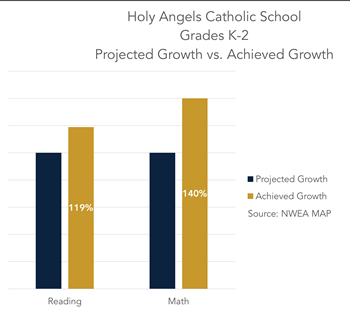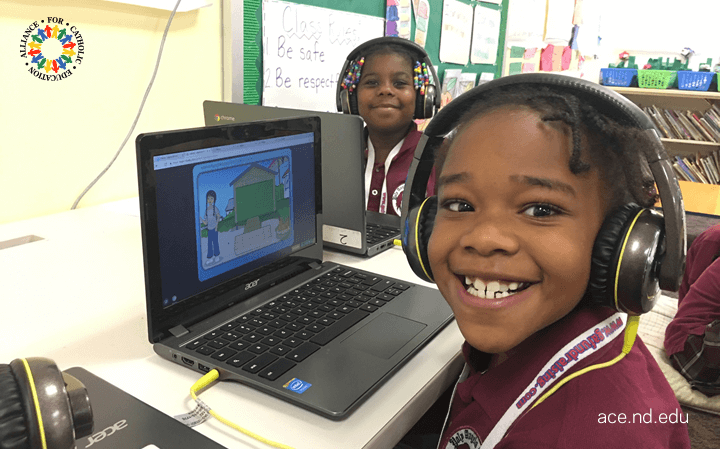Remember those feelings of nervous excitement I mentioned in our Mid-Year Check-In for Holy Angels? They returned - and stronger than ever - in May.

The end of this school year marked the conclusion of our first blended-learning pilot program in a Notre Dame ACE Academy. Pilot programs are designed to be experimental and to create opportunities to learn. We implemented blended learning at Holy Angels anticipating that the program would not be perfect and that we would learn many lessons along the way. And guess what? Our hypothesis came true!
The program at Holy Angels was far from perfect, but it did exceed almost everyone's expectations. There was quite a bit of room for growth at the beginning of the year, so we were thrilled to see that our students grew more than their academic peers in both reading and math (see Figure 1).
We were particularly excited by our primary students, who achieved 119 percent of their expected growth in reading and 140 percent of their expected growth in math! (see Figure 2) Achieving greater-than-expected growth is of the utmost importance for students who start off behind. For many of the students we serve to meet or exceed grade-level benchmarks, they need to grow at a far more rapid pace than the normal student.

Having said that, we were pleased but not overjoyed to see that our students in grades 3-6 grew about as much as they were expected to grow in both reading and math. Though this meets the general expectation for our students, we know that we can and must do more in order for them to be fully prepared for academic and professional success when they leave our school.
So, what are we doing to move the needle forward in year 2?
- Focusing on fidelity. The first- and second-grade classrooms at Holy Angels fluidly used the station rotation model almost every day. Though we will continue to encourage teachers to tweak the blended-learning model to meet the needs of their students, we will also emphasize the importance of using the adaptive software in a blended model with strong procedures every day.
- Strengthening Tier 1 Instruction. As we explained in an earlier post about one of our outstanding teachers at Holy Angels, blended learning magnifies the impact teachers have on their students. Because our teachers have an even greater opportunity to affect their students' learning with the blended-learning model, we want to strengthen their core instructional practices to ensure each lesson maximizes student learning.
We are eager to refine and strengthen Holy Angels' blended-learning program, and we are thrilled to expand blended learning to two more Notre Dame ACE Academies in Indianapolis this school year: Central Catholic School and St. Philip Neri Catholic School. Stay tuned for more information about our expansion in the coming weeks!
 Alliance for Catholic Education
Alliance for Catholic Education
